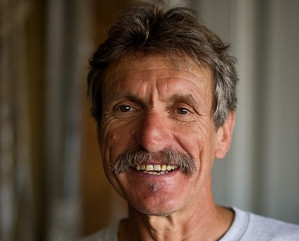Klaus Ohlmann is now the proud owner of an Antares 20E. Many of his record-breaking flights, such as the 3,000-kilometer leg around three turnpoints, the 2,000-kilometer flight in a straight line, and the fastest speed record of 306.8 km/h over the 500-kilometer target return leg, were flown by the long-range specialist with the Stemme S10 and a Nimbus 4D. In an interview, the record-breaking pilot explains why he now relies on the Antares. Klaus, how did you get involved with the Antares? What was your first encounter with her like? The first flight with an Antares 20E happened by chance. A guest once left his plane to me in Serres on a rest day. I then took off with her quite comfortably around 2 pm for an afternoon flight. The launch with the electric motor, the climb up to 4 m/s and how easily it all worked, that excited me right away. Only once before did I have such an impressive experience, when I tried the first Ventus cT incredibly many years ago. That’s when I came from aircraft that operated more on the displacement principle, thick ships like the Calif. That was a real leap in experience. And I had it again much later with the Antares. With the Antares, I couldn’t fly slow at all on my first flight. I reeled off 850 kilometers with her that afternoon. I also had to crank once in 1.5 meter climbs. At the Tete du Cuguret it didn’t go so well, I just kept on racing and threw myself just over the Col d’Allos. The Antares simply tempted me to do so. I already knew that there was nothing to land in the Verdon Valley until Colmar. To be on the safe side, I then cranked in a weaker climb. The aircraft is something like a Formula 1 racer. Where I usually flew at 150 km/h on the slope, I had 200 km/h with the Antares. That’s when the thought came up that I would have to have something like that someday. Also in terms of maneuverability, steering forces? Yes, the controls go extremely easily and are all ergonomically well placed. Everything is very well thought out. You sit comfortably and immediately feel at home. Sit in and feel comfortable. Added to this is the simplicity with which the drive can be operated. I had an all-around positive impression right away. Will you be able to top your records again with your Antares 20E? I have quite a few plans for her. One aspect is that we now have an aircraft that is very fast and can achieve a higher maximum speed, the VNE, within the scope of a permit to fly. Here, the cooperation with Lange Aviation, with Axel Lange himself, is very good. So I will get the fully mass-balanced, highly rigid wing flaps in the material of the new Lange research aircraft Antares E². The staff in Zweibrücken are largely highly motivated glider pilots themselves. Jochen Polsz, has built one for himself. The higher VNE will make it possible to travel even faster in laminar wave updrafts. It is not meant to fly in turbulence with. The higher maximum speed achievable with modifications will increase flutter resistance, an important consideration for my high altitude flight plans. I can imagine ascending to the stratosphere with my Antares, as is planned in the Perlan project. A very light Antares could carry the necessary equipment and at the same time be capable of high-altitude flight. The Antares is ideal for my third project, to present gliding as a pioneer for the use of renewable energies, and thus to promote our sport. High tech and speed, two things that can inspire young people today, form a symbiosis here. After all, the Antares flies at Formula 1 speed and has the most modern wing profiles currently available. For the general public, you have already presented the Antares in the promotional film for the Amarok SUV with spectacular launches on the high mountain course of Courchevel. You always felt safe there? The reliability and high performance of the Antares were the basic prerequisites for permission to perform the launches in Courchevel in the first place. The valley below the airfield is completely built up, so off-field landings are impossible. We were able to get the mayor on our side with a video shot in Reinsdorf on car towing and the ease of use and reliability of the drive. The aviation authorities, who had to give their okay, were convinced by the data. In Courchevel I took off x times in a car tow, then started the drive, climbed briefly and landed again on the steep slope. All without incident. The Antares 23E, which I had at my disposal from Johannes Koenig for this purpose, is a true open-class aircraft with its 23 meter wingspan. But still handy. The interview was conducted for us by Gerhard Marzinzik.

